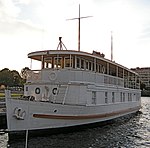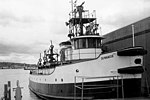Westlake, Seattle
King County, Washington geography stubsNeighborhoods in Seattle

Westlake is a neighborhood in the city of Seattle, in the U.S. state of Washington, named after its location on the western shore of Lake Union. It is a relatively narrow neighborhood, there being only a few blocks between the shoreline and its western limit at Aurora Avenue N., beyond which is Queen Anne. To the south beyond Aloha Street is South Lake Union, and to the north across the Fremont Cut is Fremont. Its main thoroughfares are Dexter and Westlake Avenues N. (north- and southbound). Tom Hanks's character in Sleepless in Seattle lived in a Westlake houseboat.Prior to its dissolution, West Coast Airlines had its headquarters in Westlake.
Excerpt from the Wikipedia article Westlake, Seattle (License: CC BY-SA 3.0, Authors, Images).Westlake, Seattle
Westlake Avenue North, Seattle Fremont
Geographical coordinates (GPS) Address Phone number Website Nearby Places Show on map
Geographical coordinates (GPS)
| Latitude | Longitude |
|---|---|
| N 47.631666666667 ° | E -122.34111111111 ° |
Address
One Lakefront
Westlake Avenue North 1287
98109 Seattle, Fremont
Washington, United States
Open on Google Maps








